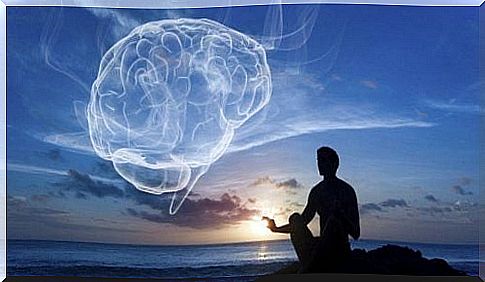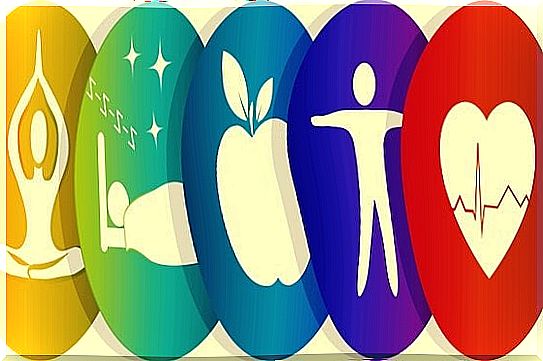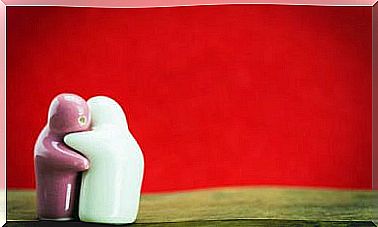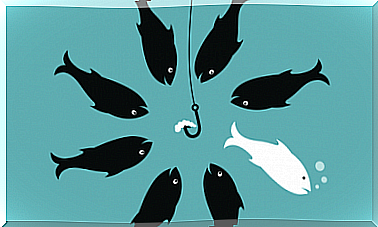Wellness: Integral Health And Mind-body Balance

Wellness is a concept that is inextricably linked to well-being. Its purpose is to improve your quality of life and to prevent physical or mental illness by caring, treating and stimulating various aspects. These include your diet, body, emotions, relationships and environment. It is a concept of comprehensive health that is becoming increasingly popular and worth getting to know.
You’ve probably seen a wellness center in your city. Usually they are beautiful locations where they offer a spa, gym and sophisticated relaxation areas. There is therefore no doubt that many hotel chains use this term for financial purposes and to broaden their clientele. It is worth mentioning, however, that the essential purpose for which the approach was conceived is sometimes somewhat forgotten. Especially since it was founded more than 50 years ago.
Wellness is not a new concept
Wellness is nothing new at all. This integral approach to well-being emerged a few years after the end of the Second World War. The social and economic model slowly improved, and with it, other types of needs took hold. Needs such as personal growth, freedom and the possibility to choose, to develop ourselves psychologically and emotionally.
It was a fascinating and defining moment. A moment when psychology became aware that its scientific model had to open up to other possibilities. For example, many professionals decided to stop focusing on treating mental illness simply by providing people with mechanisms, resources and strategies to learn to be happy. No, the goal now was to get people to invest in their well-being, in their own self-realization.
The pioneer in this field and creator of the wellness movement was Halbert L. Dun, a physician and biostatistician. In the 1950s, Dun gained popularity through his conferences and his books. His message was clear and incredibly inspiring: “People need to live in a world that is more aware, making the most of their potential.”

The 7 keys to understanding wellness
Earlier we pointed out how hotel chains or health centers offer wellness-related weekend getaways. However, these centers sometimes give us the wrong idea of what this movement originally aspired to. Wellness is not something you should really try during an outing or during a holiday. It is a lifestyle that you should integrate into your daily life.
It is therefore to be expected that more and more therapists will specialize in this strategy that aims to optimize the potential. However, we must know that it is not an easy task. It is an extremely active process that requires willpower, perseverance, full awareness and decision making.
Another aspect worth considering is that wellness is also integrated into what is known as “complementary medicine.” We speak emphatically of ‘complementary medicine’ because this strategy is not an ‘alternative’ to conventional medicine. It certainly does not try to replace ordinary medicine.
The goal of wellness is to prevent the onset of certain diseases and conditions before the signs of them even show up. It does this by, for example, reminding us how important it is to eat right and healthy, exercise or take care of one’s own emotional world.

We therefore stand for a new concept of ‘mental and physical’ well-being that teaches the individual to create healthier and happier living conditions. Thus, the individual will be able to reach his maximum potential and acquire stronger health.
Let’s take a look at the dimensions that make up wellness.
1. Physical Well-being
How would you define physical well-being? The first thing that comes to mind is without a doubt ‘the absence of disease’. But for wellness you have to go beyond that. After all, being healthy isn’t just limited to being disease-free, it’s also about ‘feeling good’.
- Think, for example, of people who suffer from arthritis, osteoarthritis or lupus. As we know, these are chronic diseases. What wellness would strive for in these cases is to improve their quality of life as much as possible.
- In order to invest in our physical well-being on a daily basis, we need to get rid of unhealthy habits such as smoking, undergo medical checkups and reduce stress. In addition, we need to know which diet is most suitable for us and find out what type of exercise would be most beneficial for us.
2. Emotional Well-being
When it comes to emotional well-being, a therapist who specializes in wellness will give us the right strategies and techniques for recognizing our own emotions. He will help us manage them and thus invest much more and better in our own well-being.
3. Intellectual Well-being
The ability to open up to new ideas, concepts, perspectives and experiences is the key to self-realization and happiness. Being active, curious and above all receptive to everything around you is a fantastic way to improve your quality of life.

4. Social Wellbeing
Now let’s ask you a question. Are the people in your social circle really offering you what you need? Sometimes you get so used to a certain social dynamic that you don’t notice how it affects you. You don’t realize how much stress it causes and how this influence contributes to your dissatisfaction.
Being aware and becoming selective in choosing the people around you is another vital, defining mechanism of wellness.
5. Environmental well-being
This aspect is not so well known. Or at least it is often overlooked. Environmental well-being refers to your ability to recognize your own responsibility for the balance of nature. By this we do not mean that you should avoid pollution in all respects or that you should live in the wilderness.
No, we are talking about environmental awareness. The idea is that small everyday gestures performed by each of us lead to real results.
Wellness also teaches us the importance of always choosing organically grown food. It teaches us how to make our home and city more sustainable, how to care for the planet, how to recycle, how to reduce the impact of plastics, etc.
6. Well-being at work
Are you happy with and at work? Are you satisfied with the activity that takes up such a large part of your day? Because taking up a lot of your time and life it does, you know that. In fact, it is often our work responsibilities that cause us the most stress and anxiety. That is why it is so important to think about this aspect.
Wellness is also trying to improve this area. It wants you to delve into your skills, essential goals and desires to create an authentic harmony between your personal and work-related spheres.
7. Mental Well-being
Spiritual development is also an important step within this approach. It stems from the need to develop that inner peace where your life is in alignment with your values. You should always have a life purpose that encourages you to get up every day, to gather strength, hope and optimism.

Finally, with this set of practices we integrate a very concrete philosophy into our lives. It is the same philosophy that Halbert L. Dun held in his day. A philosophy that above all emphasizes the personal responsibility of the person. We are a whole, composed of emotions, a mind, a body, our relationships and the environment in which we live. All these aspects form a unit. A unit that every science should understand in a broader and more inclusive way. The science…and us too.
So let’s take better care of ourselves and invest time and willpower in this. Take good care of all these areas that you sometimes neglect or overlook without even realizing it…









